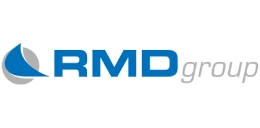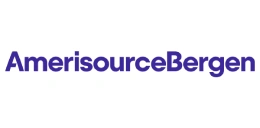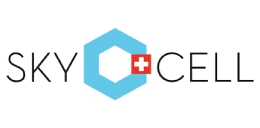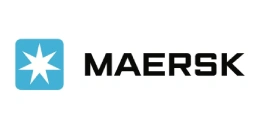Hepatitis Testing Day 2025: Advancing Early Detection and Global Health Outcomes
.webp)
Observed on May 19, Hepatitis Testing Day 2025 emphasizes the need to "Test. Treat. Eliminate," highlighting the gap in diagnosing hepatitis B and C, which cause over 1.3 million deaths annually. Hepatitis remains a major global health threat, on par with HIV, tuberculosis, and malaria. The growing viral hepatitis market reflects rising demand for better diagnostics, treatments, and integrated care. The WHO warns that without faster testing and treatment, the goal of eliminating hepatitis by 2030 may not be achieved, with disparities in diagnostics, particularly in low- and middle-income countries, hindering progress.
In response, both public and private sectors are ramping up efforts to expand screening, deploy advanced detection technologies, and scale community-based outreach. According to IMARC Group, the global hepatitis diagnostic tests market reached USD 6.1 Billion in 2024 and is projected to grow at a CAGR of 4.23% during 2025-2033, driven by innovations such as point-of-care testing, AI-powered diagnostic tools, and self-testing kits.
A Silent Storm: The Rising Global Toll of Hepatitis
Viral hepatitis continues to sweep across the globe with deadly efficiency. According to the WHO, over 300 million people are currently living with chronic hepatitis B and C. These infections caused an estimated 1.3 million deaths in 2022 alone, making hepatitis a deadlier killer than HIV in many regions. What is most alarming is that despite hepatitis being both preventable and treatable, over 80% of people living with hepatitis remain undiagnosed, allowing the disease to progress unchecked in millions. This has led to the rapid growth of the chronic hepatitis B market, emphasizing the urgent need for better diagnostic tools and effective treatments.
The burden of hepatitis is uneven, with India, China, Indonesia, and Nigeria accounting for a large share of global cases, highlighting regional disparities. Many of these countries face limited access to diagnostics, vaccines, and public awareness. High-income nations are also experiencing hepatitis resurgences, as seen in the U.S., where acute hepatitis C cases rose sharply in January 2025, driven by increased injection drug use. The CDC warns that without expanded testing and treatment, this trend could undermine national hepatitis elimination goals.
Despite the existence of effective vaccines for hepatitis B and curative therapies for hepatitis C, a combination of underdiagnosis, stigma, and weak health infrastructure leaves millions untreated and at continual risk. With the WHO targeting the elimination of viral hepatitis as a public health threat by 2030, narrowing the diagnostic gap has emerged as the most pressing global priority. In this context, the hepatitis B market plays a pivotal role, as expanding access to diagnostics, vaccines, and antiviral therapies is essential to driving both prevention and long-term disease control.
Diagnose to Defend: The Life-Saving Power of Early Testing
Timely detection is key to hepatitis control, as many people remain asymptomatic until serious complications arise. The CDC now recommends all adults be screened at least once for hepatitis B and C. Early diagnosis improves outcomes and reduces transmission. Universal testing is especially critical for pregnant women, marginalized groups, and those with limited healthcare access. In early 2025, the World Hepatitis Alliance launched a campaign targeting undocumented migrants across Asia and Europe, offering free testing and treatment via mobile clinics. As elimination targets for 2030 approach, such inclusive, community-based strategies are vital to closing diagnostic gaps and preventing advanced disease.
From Lab to Life: How Technology is Transforming Hepatitis Detection
Advances in diagnostic technology are tearing down the barriers that have long hindered effective hepatitis testing. These innovations are bringing testing to the doorstep of the most remote and underserved populations, ensuring that early detection and timely care are no longer out of reach for many. Here’s how cutting-edge tech is transforming the fight against hepatitis:
- Point-of-Care Testing:
- Rapid diagnostic tests (RDTs) now provide results in minutes, making it possible to test even in rural and resource-limited settings.
- These portable tools decentralize hepatitis care, making testing accessible in the most remote areas, where traditional healthcare infrastructure may not exist.
- Portable PCR and NGS:
- Portable PCR devices and next-generation sequencing (NGS) technologies are making early detection more affordable and faster, even in low-resource settings.
- As these platforms scale, they promise to reduce diagnostic costs, bringing life-saving tests to millions more globally.
- Self-Test Revolution:
- In July 2024, the WHO prequalified the OraQuick HCV self-test, a simple, self-administered diagnostic tool developed by OraSure Technologies.
- This tool uses a fingerstick blood sample and delivers results in just 20 minutes, empowering individuals—especially those hesitant to visit healthcare facilities—to test privately and with ease.
All Hands-on Deck: Governments and NGOs Lead the Charge
Policymakers and NGOs are key in driving collective action against hepatitis, with strategic plans targeting diagnosis, care, and prevention. These plans aim to eliminate hepatitis C as a public health threat by 2030 through enhanced testing, broader access to antiviral therapy, and integrated care. The growing hepatitis C market reflects the rising demand for direct-acting antivirals, point-of-care testing, and decentralized treatment, underscoring the need for cross-sector collaboration to ensure no one is left behind.
In 2024, the WHO issued a call-to-action targeting the ten countries most affected by hepatitis B and C, urging accelerated testing and care to meet the 2030 elimination goal. These high-burden regions face persistent challenges like weak health systems and low awareness. Focused collaboration among policymakers, NGOs, and health agencies remains essential to reduce the global toll of this preventable, treatable disease.
Profit Meets Purpose: The Private Sector Steps In
Private sectors, biotech companies, pharmaceutical manufacturers, and diagnostic testing facilities are increasingly taking center stage in combating hepatitis. Innovation spurred by industry has resulted in cheaper and more accessible test kits, antiviral medications, and treatment options. Notably, the alcoholic hepatitis market has also seen a surge in activity, with new therapeutic approaches and diagnostics being explored to address this often-overlooked subset of liver disease. New investments and partnerships over the past few years have been directed towards simplifying service delivery, integrating care into primary healthcare systems, and scaling rapid diagnostic technology. Yet, engagement by the private sector is still disjointed, barring it from its full potential. Greater coordination between public health systems and private actors would help speed up diagnostics, improve supply chains, and fuel awareness campaigns—essential ingredients for meeting global hepatitis elimination targets by 2030.
Public-Private Partnerships: A Path to Success
In high-burden countries like Georgia, public-private partnerships have been vital. With strong political will and collaboration between governments, industry, and the patient community, Georgia has reduced its hepatitis C prevalence and is on track for elimination in under a decade. This success highlights the importance of private sector involvement in expanding treatment access, testing services, and contributing to global health equity in the fight against hepatitis.
Towards 2030: A Global Health Vision Within Reach
Hepatitis Testing Day 2025 reinforces a vital message: testing saves lives. As part of Hepatitis Awareness Month, efforts are intensifying to cut hepatitis A infections by 40% and raise hepatitis B birth dose vaccination to 75%. Expanded testing, cross-sector collaboration, and policy momentum are reshaping global hepatitis care. The hepatitis A market is seeing renewed focus through improved surveillance and immunization, while the autoimmune hepatitis market is advancing via research and early diagnostics. The Global Hepatitis Summit 2025 spotlighted unified strategies to eliminate hepatitis as a public health threat by 2030—an increasingly attainable goal with data-driven and collective action.
How IMARC Group Supports Innovation in Hepatitis Management
IMARC Group equips stakeholders across the healthcare ecosystem with the strategic intelligence needed to navigate the evolving landscape of hepatitis management. Our services enable clients to identify opportunities, mitigate risks, and drive innovation in hepatitis-related solutions through:
- Market Insights: Evaluate the global prevalence of hepatitis A, B, C, D, and other forms of viral hepatitis, along with unmet therapeutic needs and emerging high-growth areas—such as antiviral treatments, vaccines, and diagnostics.
- Strategic Forecasting: Prepare for future shifts in global hepatitis care, including advancements in digital health monitoring, point-of-care testing, and strategies to combat hepatitis-related stigma and awareness challenges.
- Competitive Intelligence: Track the latest innovations in hepatitis treatment and prevention, including developments in the global hepatitis B and C market, emerging hepatitis D market therapies, and the rising influence of AI-powered diagnostic tools and personalized medicine. As biopharma and tech sectors converge, these advancements promise more precise, accessible, and scalable solutions to accelerate global elimination goals.
- Policy and Regulatory Analysis: Understand the evolving impact of public health initiatives, such as the WHO's 2030 elimination goal, and examine the influence of national screening programs, vaccination initiatives, and reimbursement policies on market access and affordability.
- Tailored Consulting Solutions: From strategic assessments to digital implementation planning, we offer customized strategies aligned with your organizational objectives to help you address hepatitis management challenges effectively.
As hepatitis continues to pose a major global health challenge, IMARC Group stands as a trusted partner, fostering innovation, providing critical insights, and enabling impactful decision-making to help drive the global effort to eliminate hepatitis as a public health threat by 2030.
Our Clients
Contact Us
Have a question or need assistance?
Please complete the form with your inquiry or reach out to us at
Phone Number
+91-120-433-0800+1-201-971-6302
+44-753-714-6104










